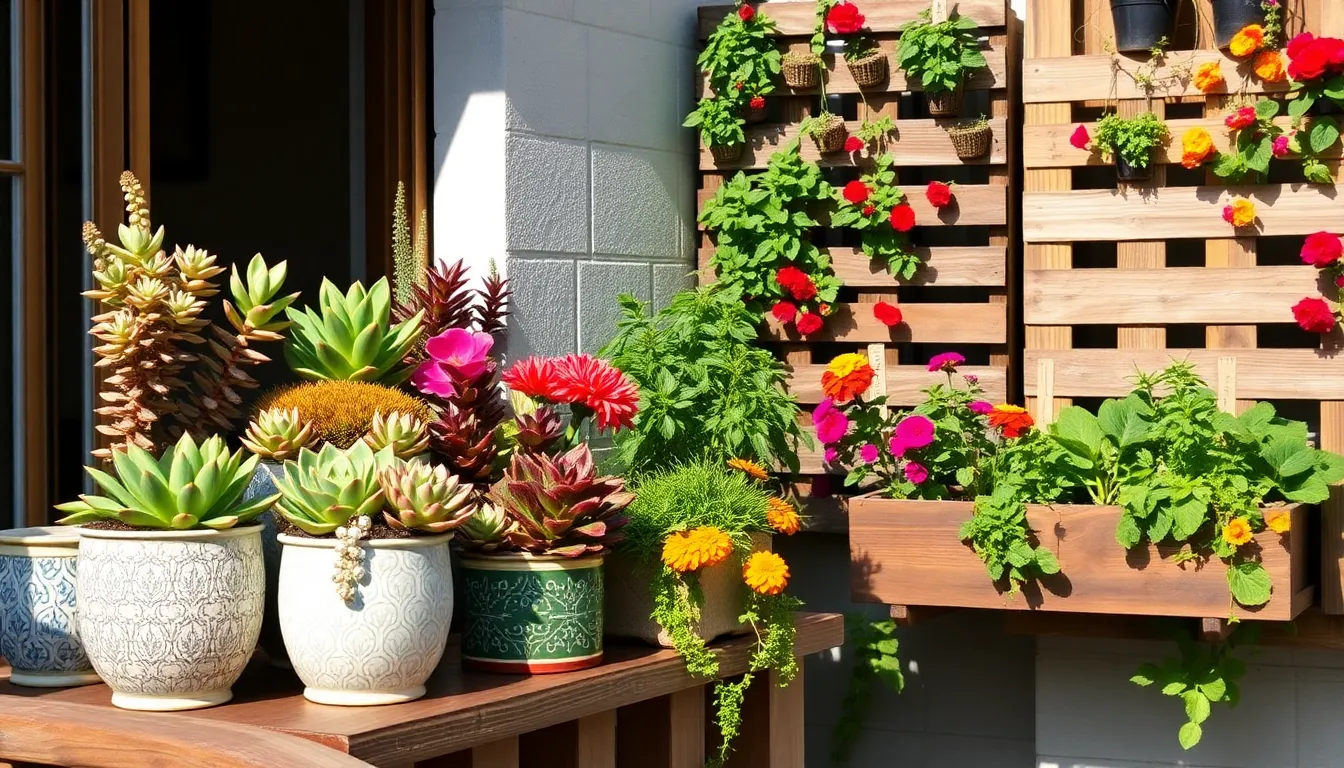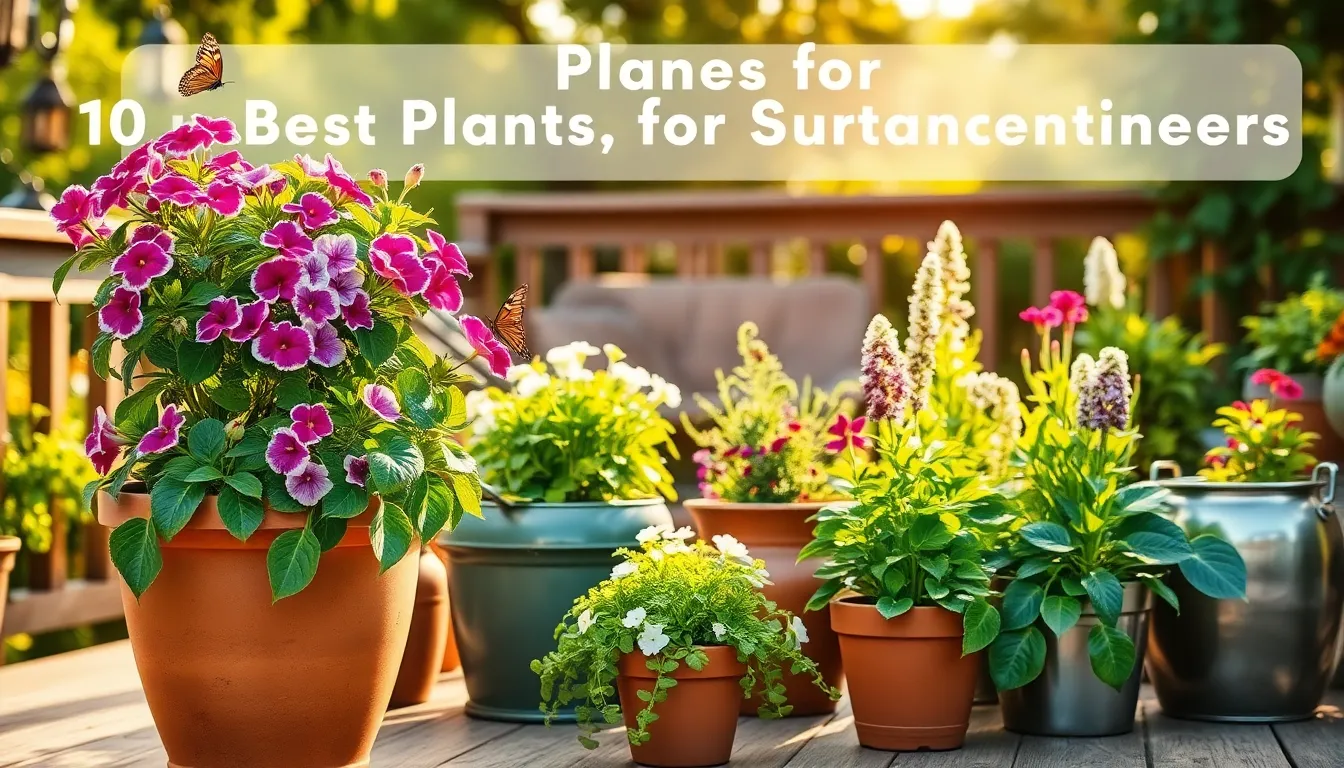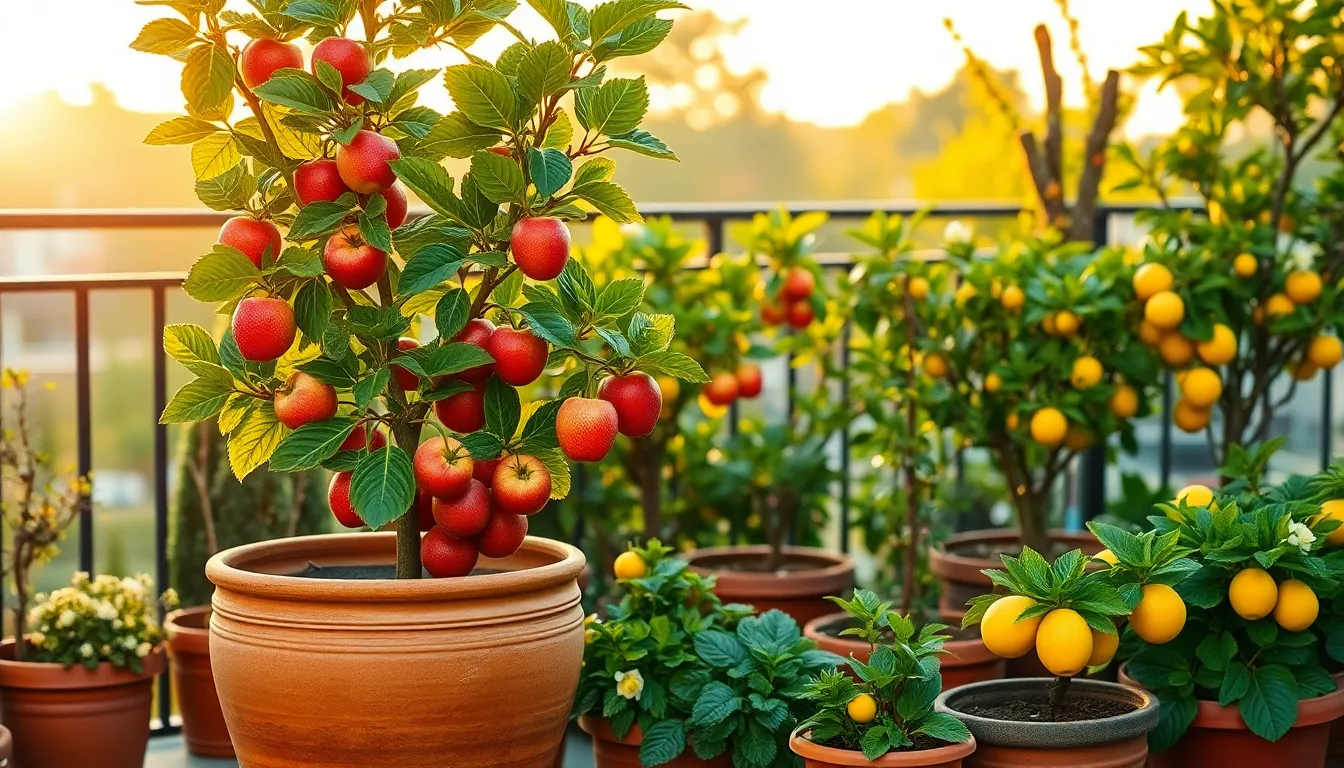For those who believe that a small yard limits your gardening dreams, container gardening offers a vibrant solution that transforms any space into a flourishing oasis. Whether you’re a budding green thumb or a seasoned horticulturist, this guide is your ticket to unlocking the potential of every corner, balcony, and windowsill, no matter the size.
Imagine the joy of harvesting fresh herbs right from your doorstep or the satisfaction of seeing a burst of colorful blooms greet you each morning. This collection of container gardening tips not only empowers you to maximize your limited space but also ensures that your efforts yield lush, thriving plants.
Dive into the world of container gardening and discover practical techniques that promise success, even if you’ve never planted a seed before. With each tip, you’ll gain the confidence to create a personalized garden haven that brings beauty and bounty to your life.
Choose Space-Saving Container Sizes
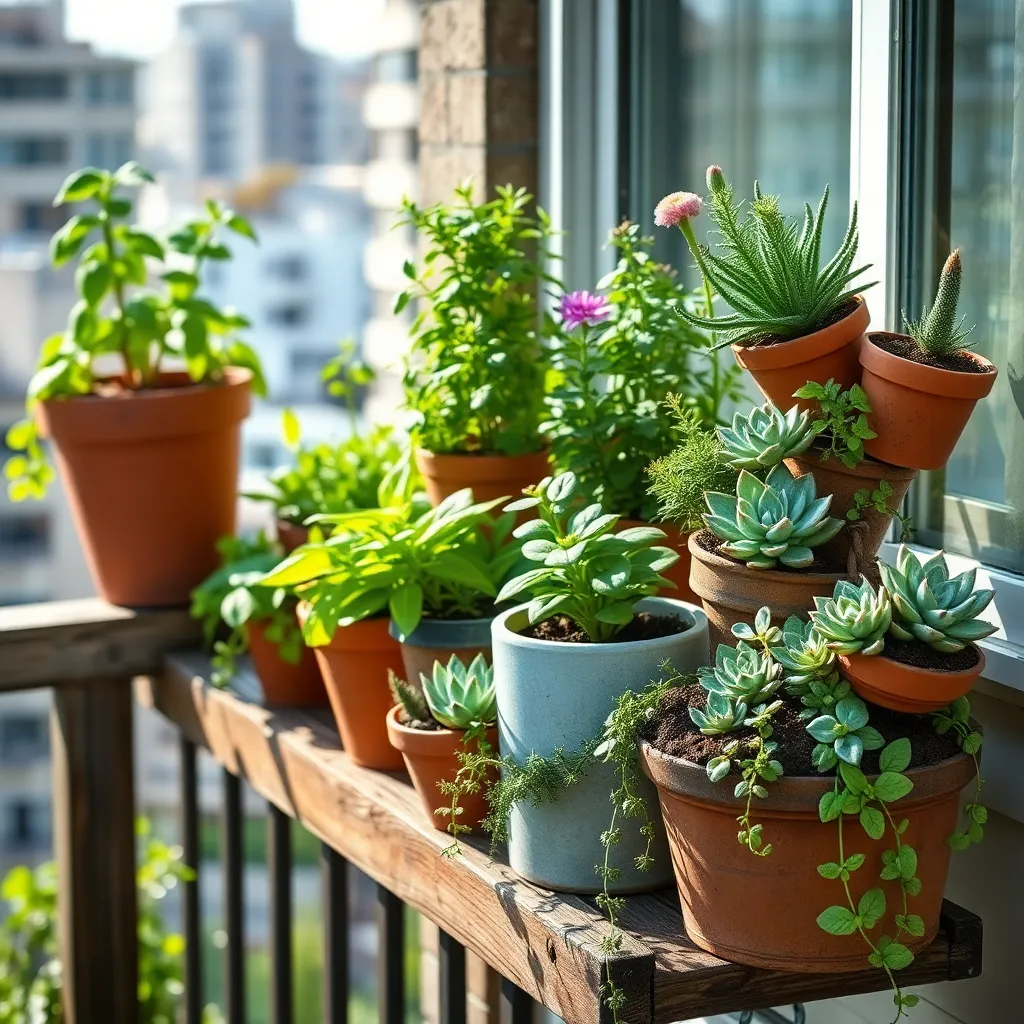
When selecting containers for your small yard, it’s essential to maximize your space while ensuring your plants have enough room to thrive. Choose containers that are deep enough to accommodate root growth but compact enough to fit your available space, such as vertical planters or stackable pots.
Opt for lightweight materials like plastic or fiberglass, which are easier to move and rearrange. These materials also help in retaining moisture, which is beneficial for preventing your plants from drying out too quickly in the heat.
Utilize containers with a minimum depth of 12 inches for most vegetables and flowers to ensure adequate root development. For larger plants like tomatoes or peppers, consider using containers that are at least 18 inches deep to provide ample space for root expansion.
To further conserve space, consider using a tiered shelving system that allows you to grow plants vertically. This setup not only saves ground space but also makes it easier to manage watering and access sunlight for all your plants.
Select Lightweight Potting Mix
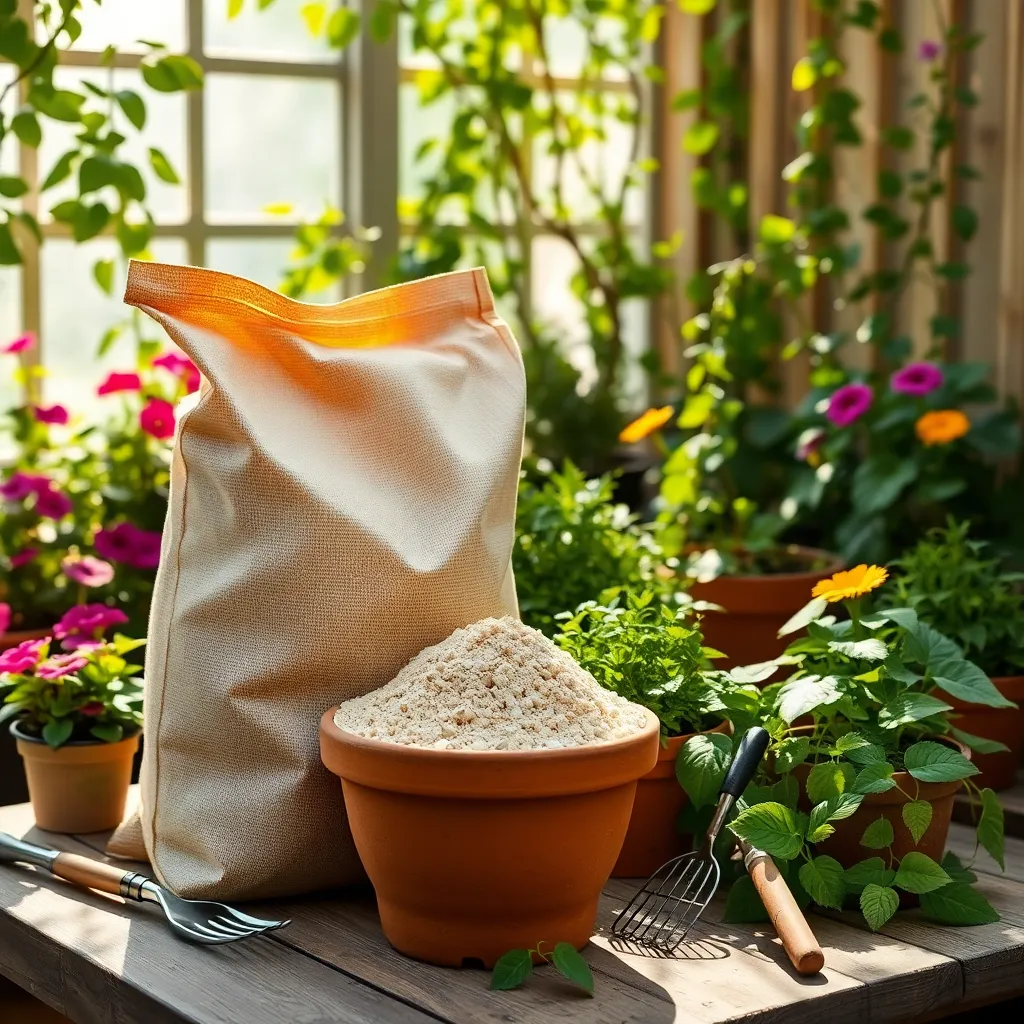
When selecting a potting mix for your container garden, prioritize a *lightweight blend*. This not only makes it easier to move your containers around but also ensures proper aeration for healthy root growth.
Look for potting mixes that contain components like *perlite, vermiculite, or coconut coir*, as these materials help retain moisture without making the soil too heavy. A mix with these ingredients will maintain an ideal balance of air and water, which is crucial for the health of your plants.
Beginners should start with a pre-mixed, high-quality potting soil from a reputable brand. These mixes are usually well-balanced and contain the necessary nutrients to support a wide range of plants.
For more experienced gardeners, consider customizing your potting mix by adding *compost or worm castings* to boost nutrient content. Customization allows you to tailor the mix to the specific needs of the plants you are growing, providing them with optimal growing conditions.
Maximize Vertical Planting Space
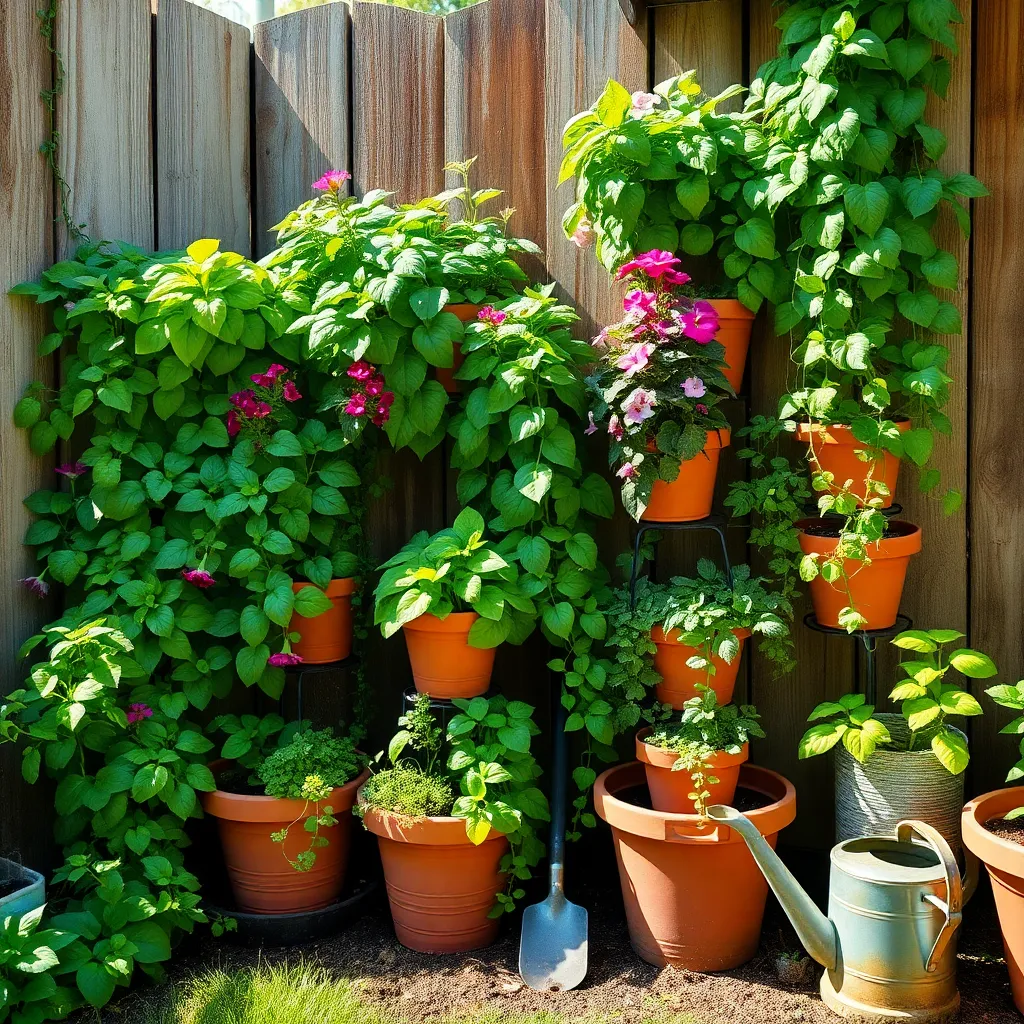
Maximizing vertical planting space is a fantastic way to enhance your container garden’s productivity and aesthetic appeal. Start by considering the use of vertical structures like trellises, wall planters, or even hanging baskets to utilize every inch of space available.
You can create a vibrant vertical garden by planting climbing plants such as peas, beans, or jasmine, which naturally grow upwards. Ensure these plants have a sturdy support system, as this will help them thrive and produce an ample harvest.
Incorporating vertical space can also be achieved by stacking planters or using tiered plant stands. This method allows you to grow a variety of plants without taking up much horizontal space, making it ideal for small yards.
Watering can be tricky in vertical gardens, so consider using a drip irrigation system to ensure consistent moisture. Additionally, choose a potting mix that retains moisture yet drains well, like a mix with added perlite or coconut coir, to keep your plants healthy.
Ensure Adequate Drainage Holes
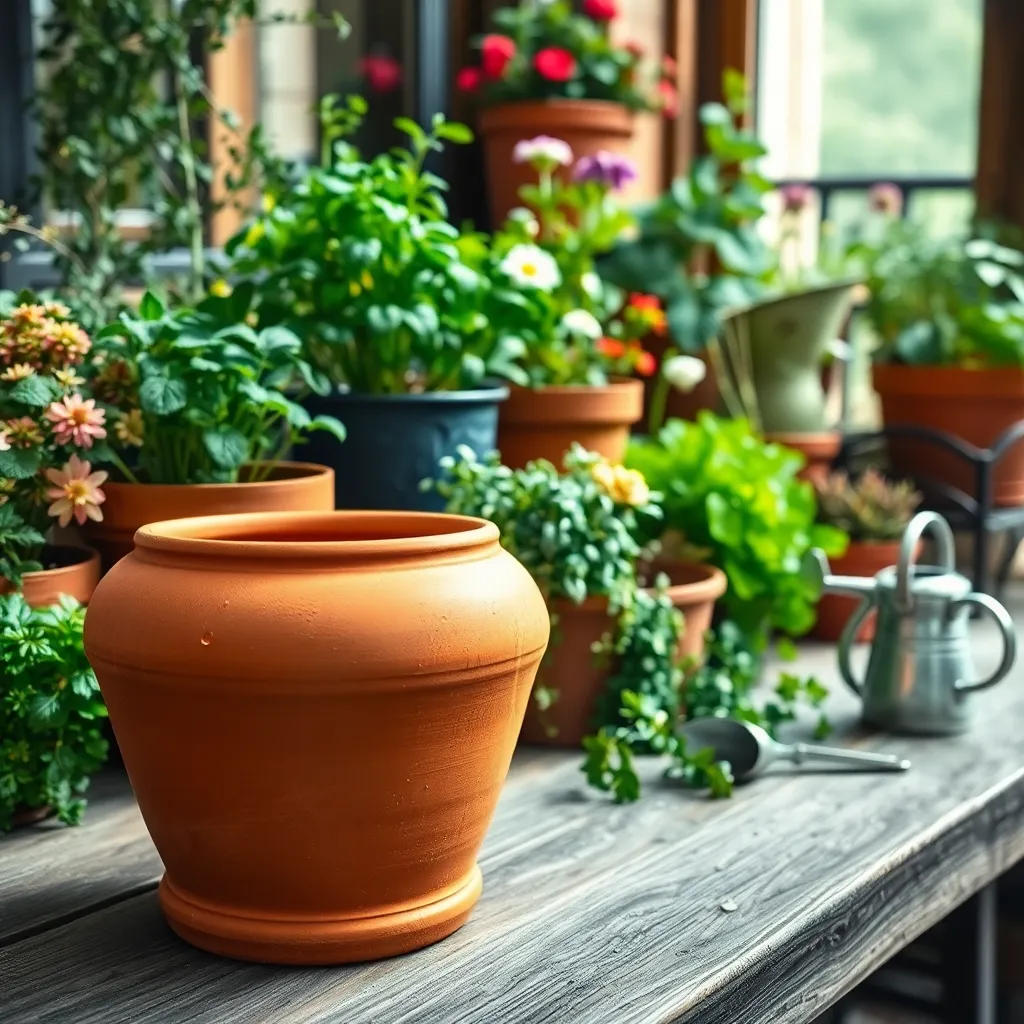
When engaging in container gardening, ensuring adequate drainage holes is crucial for plant health. Containers without proper drainage can lead to waterlogged roots, which suffocate plants and encourage root rot.
To start, check the bottom of your pots for existing drainage holes or drill your own if necessary. A good rule of thumb is to have at least one large hole or several small holes to allow excess water to escape efficiently.
For beginners, using a potting mix specifically formulated for containers can help improve drainage. These mixes often contain components like perlite or vermiculite, which enhance aeration and water management.
Advanced gardeners might consider adding a layer of gravel or broken pottery at the bottom of the container. While this practice is debated, it can sometimes help prevent soil blockage of drainage holes, further ensuring that water moves freely.
Group Plants with Similar Needs
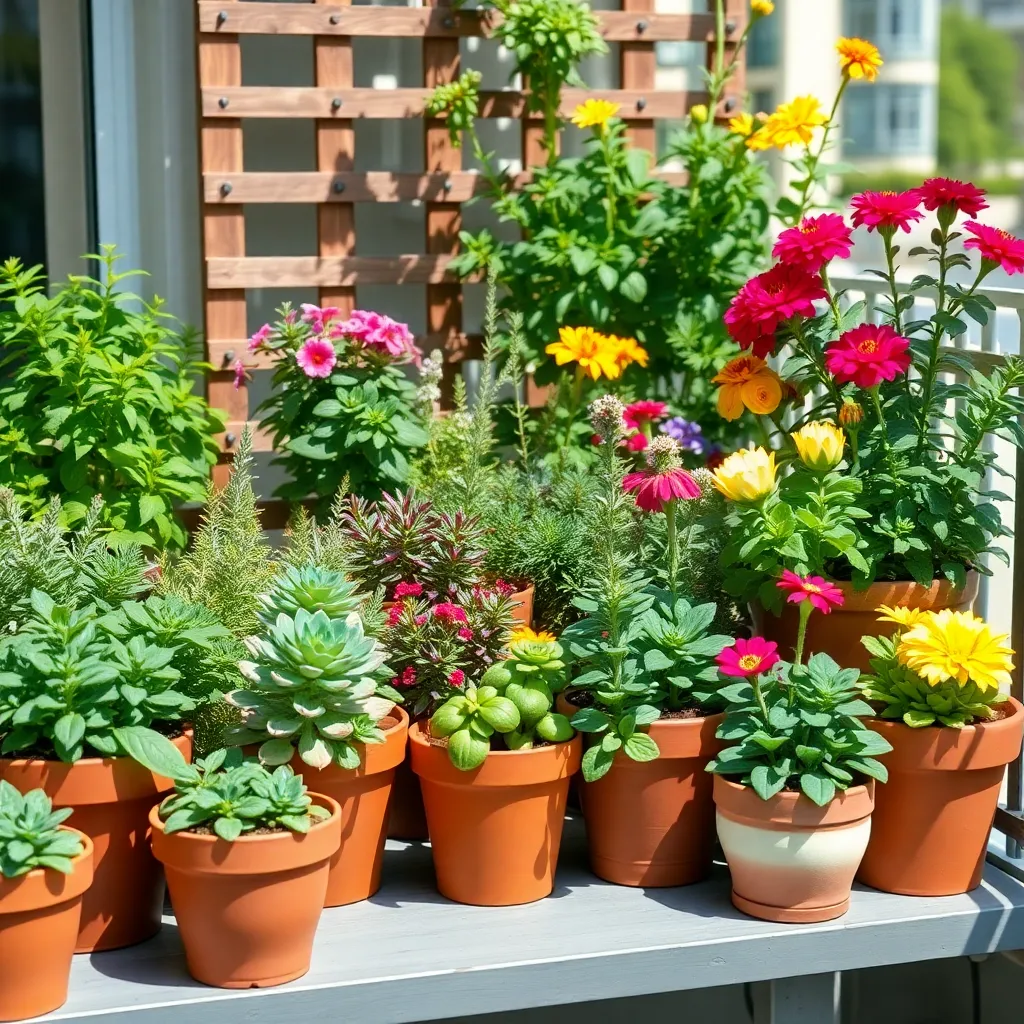
Grouping plants with similar needs is a smart strategy to ensure your container garden thrives. It’s important to consider factors like sunlight, water, and soil requirements when selecting plants to share a container.
For example, plants that prefer full sun, such as tomatoes and basil, should be potted together. Both plants enjoy well-draining soil and consistent watering, making them excellent companions in a sunny spot.
Shade-loving plants such as ferns and hostas can be grouped to create a lush, green display in areas with indirect light. They thrive in moist, well-drained soil and can help each other maintain humidity levels by reducing evaporation.
Advanced gardeners might consider grouping drought-tolerant plants like succulents and lavender. These plants require less water and thrive in sandy or gritty soil, which ensures good drainage and prevents root rot.
Conclusion: Growing Success with These Plants
In exploring ‘Container Gardening Tips for Small Yards,’ we’ve delved into five key relationship concepts that can cultivate a thriving outdoor space. First, communication is akin to understanding the specific needs of each plant, ensuring they flourish in harmony. Second, commitment mirrors the regular care and attention your garden requires. Third, flexibility allows you to adapt to changing conditions, just as relationships grow and evolve. Fourth, creativity in garden design reflects the innovative ways to keep your relationships engaging and fresh. Finally, patience reminds us that both gardens and relationships take time to mature and bear fruit.
To bring these insights to life, take a moment today to assess your current garden—or relationship—and identify one area where a little extra care could make a big difference. As you embark on this nurturing journey, remember to save this article for future reference, ensuring you have this valuable guide at your fingertips whenever you need it.
With these principles in mind, you’re well on your way to cultivating not just a beautiful garden, but also successful, lasting relationships. Embrace each step with an open heart and watch as your efforts blossom into enduring joy.

